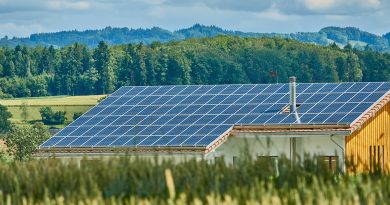Solarizing Ayodhya
Ayodhya, the ancient city steeped in mythology and spirituality, is now poised for a modern transformation. The Uttar Pradesh government has nominated Ayodhya to be developed as a “Solar City”, where the abundant renewable energy potential shall be harnessed to meet the city’s electricity requirements. Let’s explore the sun-kissed journey of Ayodhya toward sustainability.
Table of Contents
The Solar Vision
Ayodhya’s solarization initiative aims to achieve several key objectives:
Harnessing Solar Energy: Ayodhya’s rooftops and open spaces will become canvases for solar panels, capturing the sun’s energy and converting it into electricity.
Reducing Carbon Footprint: By embracing solar power, Ayodhya seeks to reduce its reliance on fossil fuels and contribute to global efforts in combating climate change.
Empowering Communities: Solar energy democratizes power generation. Ayodhya’s residents, businesses, and institutions will actively participate in this green revolution.
Key Statistics and Information
Installed Capacity: Ayodhya currently boasts 0 MW of installed rooftop solar systems.
Estimated Renewable Energy Share: The city aims for an estimated 0% share of renewable energy in its electricity consumption.
Rooftop Solar Potential: Ayodhya’s rooftops hold an estimated potential of 0 MW for solar installations.
2030 Target: By 2030, Ayodhya aims to achieve 0 MW of rooftop solar systems.
100% Renewable Energy Target: The broader goal is to transition to 100% renewable energy across electricity, transport, and other sectors.
Outreach Campaigns: A network of over 150 volunteers actively promotes rooftop solar adoption.
Government Buildings: A comprehensive strategy is in place for the solarization of government buildings.
Ayodhya’s Solar Milestones
1. Solar-Powered Steet Lights Line
Ayodhya is set to establish the world’s largest “Solar-powered street light line.”
470 solar street lights will illuminate the path between Guptar Ghat and Nirmali Kund, blending tradition with modernity.
2. 40 MW Solar Plant
Ayodhya’s 40 MW Solar plant will become fully operational by March 2024
This utility-scale project contributes significantly to the city’s renewable energy capacity.
3. Rooftop Solarization
Residential, commercial, and industrial buildings in Ayodhya have embraced rooftop solar.
A total capacity of 1,073 kW has been established, empowering local communities.
Key Stakeholders
Uttar Pradesh New & Renewable Energy Development Agency (UPNEDA):
The driving force behind Ayodhya’s solarization.
Collaborates with key partners to achieve the solar vision.
Ayodhya Municipal Corporation:
A crucial partner in implementing solar initiatives.
Works hand in hand with UPNEDA to transform Ayodhya.
MVVNL (Madhyanchal Vidyut Vitran Nigam Limited):
Ayodhya’s electricity distribution utility.
Supports the integration of solar power into the grid.
Conclusion
Ayodhya, the city of ancient temples and sacred rivers, now embraces the sun as its ally. As solar panels adorn rooftops and streets, Ayodhya’s legacy merges with a sustainable future. Let us witness the dawn of a solarized Ayodhya—a beacon of hope and harmony!




